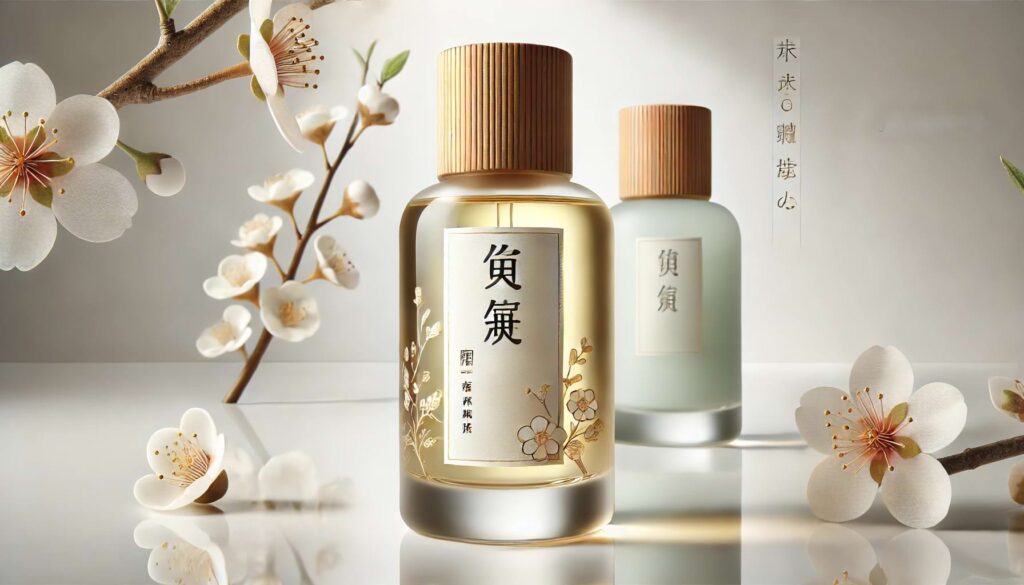When it comes to Japanese face oil, they’re one of our favorite essentials in Japanese skincare. These lightweight, plant-based oils are perfect for deeply hydrating your skin, improving texture, and giving it that radiant glow.
Trusted for generations, Japanese face oils deliver moisture without clogging pores, making them ideal for all skin types.
In this guide, we’ll share everything you need to know about Japanese face oils. You’ll learn about the key ingredients, how they’re different from regular face oils, and how to choose the best one for your skin. Let’s dive in!
– Japanese face oils provide lightweight, deep hydration and improve skin texture without clogging pores.
– Use camellia oil, rice bran oil, or squalane based on your skin type for optimal results.
– Incorporate face oils into your morning and night routines to lock in moisture and enhance skin elasticity.
– Avoid over-application and always pair face oil with a moisturizer and sunscreen for the best protection.

1. What is Japanese Face Oil?
Japanese face oil is a lightweight, plant-based oil designed to moisturize, protect, and nourish your skin. Thanks to its silky texture, it absorbs quickly without leaving any greasy residue.
1.1 Key Ingredients in Japanese Face Oils
Here are the ingredients we love most in Japanese face oils:
- Camellia Oil: Rich in vitamins A, D, and E, this traditional Japanese oil deeply moisturizes without clogging pores.
- Rice Bran Oil: Packed with antioxidants, rice bran oil helps brighten your skin and improve texture.
- Squalane: Mimics your skin’s natural oils, making it perfect for sensitive or oily skin.
These natural ingredients are what make Japanese face oils so effective at keeping your skin hydrated and smooth.
1.2 How Japanese Face Oils Differ from Regular Face Oils
What makes Japanese face oils stand out? It’s their purity and lightweight feel. Unlike many regular oils, they absorb quickly and don’t leave your skin feeling greasy. Plus, they’re made using high-quality, cold-pressed ingredients, ensuring your skin gets maximum benefits.
We’ve tested plenty of oils, and Japanese face oils always deliver the best results: long-lasting moisture, improved elasticity, and a soft, radiant finish. That’s why they’re a staple in our routine.

2. What Are the Benefits of Using Face Oils?
2.1 Deep Hydration and Moisture Retention
One of the standout benefits of Japanese face oils is their ability to lock in moisture. When applied, they form a protective barrier on your skin, preventing water loss and keeping it hydrated throughout the day.
We’ve noticed that just a few drops can make a huge difference, especially for those with dry or dehydrated skin. If your skin feels tight or flaky, applying a light layer of oil can leave it soft and nourished all day long.
2.2 Enhancing Natural Glow
Japanese face oils are perfect for adding a healthy, youthful glow to your skin. Thanks to their nutrient-rich formulation, they hydrate the skin deeply, giving it a fresh and plump appearance.
We love how these oils deliver a radiant finish without leaving a greasy feel. It’s one of the quickest ways to give your face a boost of vitality.
2.3 Anti-Aging and Skin Elasticity Improvement
Rich in antioxidants, Japanese face oils help fight the signs of aging by reducing free radical damage. Regular use can improve elasticity and reduce the appearance of fine lines.
In our experience, oils like camellia and rice bran are especially effective for keeping skin firm and youthful. Adding them to your daily routine is a simple yet powerful way to maintain smooth, resilient skin.
2.4 Smoother Skin Texture
For those dealing with rough patches or uneven texture, Japanese face oils can be a game-changer. They help smooth out the skin’s surface, reduce dryness, and even minimize the appearance of pores. We’ve found that consistent use leads to softer, more refined skin over time.
2.5 Soothing Oils for Sensitive Skin
If you have sensitive or irritated skin, certain Japanese face oils offer soothing relief. Ingredients like lavender and rosehip oil are known for their anti-inflammatory properties, helping to calm redness and promote healing.
We often recommend these oils to those with reactive skin, as they provide both comfort and nourishment without causing irritation.

3. How to Incorporate Face Oil into Your Skincare Routine
3.1 Morning Routine
Starting your day with a simple skincare routine can make all the difference. After cleansing and toning, adding Japanese face oil to your morning routine can help keep your skin soft, smooth, and hydrated throughout the day. Here’s how to do it:
- Cleanse and tone your face to prepare your skin.
- Apply a lightweight serum to give your skin an extra boost.
- Add 2-3 drops of Japanese face oil, pressing it gently into your skin to lock in moisture.
- Follow with a moisturizer to keep everything sealed in.
- Finish with sunscreen to protect your skin all day long.
Using face oil in the morning helps your makeup sit better and gives you a healthy glow without feeling greasy. It’s quick, easy, and makes a big difference!
3.2 Night Routine
Nighttime is the perfect opportunity for your skin to recover, so adding Japanese face oil to your evening routine helps it repair and rejuvenate. Here’s how to end your day on a glowing note:
- Cleanse your face to remove dirt, makeup, and oil from the day.
- Exfoliate 2-3 times a week to clear out dead skin and unclog pores.
- Apply a few drops of Japanese face oil as the last step before your night cream.
- Let the oil absorb fully before sealing it in with your night cream.
Face oil works overnight to deeply nourish your skin, improve elasticity, and reduce fine lines. You’ll wake up with soft, refreshed skin ready for the day ahead.
3.3 How Often Should You Use Japanese Face Oil?
The frequency of use depends on your skin type. For dry skin, daily use is recommended to maintain hydration. If you have oily skin, applying it every other day helps balance oil production without overloading your skin.
Feel free to adjust the routine according to your skin’s needs. The key is consistency—regular use of Japanese face oil ensures long-term benefits like smoother texture and lasting hydration.

4. How to Choose the Right Face Oil for Your Skin
4.1 Best Oils for Dry Skin
For those with dry skin, we recommend deeply hydrating oils like camellia oil, argan oil, and rosehip oil. These oils are rich in essential fatty acids and vitamins, which help restore moisture and strengthen the skin’s barrier. Regular use can leave your skin feeling soft, smooth, and nourished.
4.2 Lightweight Oils for Oily and Acne-Prone Skin
If you have oily or acne-prone skin, lightweight, non-comedogenic oils are your best bet. Grapeseed oil and squalane are perfect choices. These oils balance sebum production without clogging pores, helping to keep your skin clear and fresh.
4.3 Best Oils for Sensitive Skin
Sensitive skin benefits from soothing oils like chamomile oil and lavender oil. These oils are known for their calming properties, helping to reduce redness and irritation. Their gentle nature makes them ideal for delicate or reactive skin.
4.4 Best Oils for Combination Skin
For combination skin, we suggest a targeted approach. Use heavier oils like camellia on dry areas and lighter oils like squalane on oily areas. This method ensures that each part of your face gets exactly what it needs without feeling greasy.

5. How to Properly Apply Japanese Face Oil
5.1 How Much Oil Should You Use?
When it comes to applying Japanese face oil, less is more. Start with 3-5 drops, depending on your skin’s needs. This amount is usually enough to cover your face without overloading it.
5.2 Application Techniques
For the best results, gently press and pat the oil into your skin rather than rubbing it. This technique allows better absorption and prevents irritation. Avoid pulling or stretching the skin, especially around delicate areas like your eyes.
5.3 Face Massage Tips for Maximum Benefits
Adding a light massage while applying the oil can boost circulation and improve absorption. Use circular motions to gently massage the oil into your skin, focusing on dry or problem areas. You can also lightly tap with your fingertips to stimulate blood flow and promote a healthy glow.

6. Common Mistakes to Avoid when using face oils
Even the best products can cause issues if not used correctly. Here are a few common mistakes to watch out for:
- Applying too much oil: Using too much can lead to clogged pores and an oily finish. Start with just a few drops and adjust as needed.
- Skipping moisturizer: Face oil locks in moisture, but it doesn’t replace your moisturizer. Apply oil after your moisturizer to seal in hydration.
- Choosing the wrong oil: Using oils not suited for your skin type can result in breakouts or irritation. Make sure to pick an oil that works well for your specific needs.
- Using oils with synthetic additives: Some oils contain synthetic ingredients that can irritate sensitive skin. Opt for high-quality, natural oils.
7. How to Incorporate Japanese Face Oil into Your Makeup Routine
7.1 As a Primer
Applying a few drops of Japanese face oil before your foundation helps create a smooth, dewy base. This gives your makeup a fresh, natural glow and keeps your skin hydrated throughout the day.
7.2 Mix with Foundation
If you want a radiant, glowy finish, try mixing a drop of face oil directly into your foundation. It helps improve the texture of the foundation and adds a subtle shine, making your complexion look more luminous.
7.3 Touch-Up During the Day
For a mid-day refresh, dab a small amount of oil onto the high points of your face, like your cheekbones and brow bones. This trick adds a natural glow without disturbing your makeup.
7.4 DIY Japanese Face Oil Blends
Creating your own face oil blends can be fun and allows you to customize based on your skin’s needs. Here are some simple recipes:
1. Blend for Dry Skin
- Ingredients: Camellia oil + Rosehip oil + Vitamin E.
- Deeply hydrates and restores moisture.
2. Blend for Oily Skin
- Ingredients: Squalane + Grapeseed oil + Tea Tree oil (in small amounts).
- Balances sebum production and helps prevent breakouts.
3. Blend for Sensitive Skin
- Ingredients: Lavender oil + Chamomile oil + Jojoba oil.
- Soothes irritation and reduces redness.
FAQ
Can Japanese face oil be used on oily or acne-prone skin?
Yes, it can! Lightweight, non-comedogenic oils like squalane and grapeseed oil are ideal for oily and acne-prone skin. They help balance sebum production without clogging pores.
How often should I use Japanese face oil?
It depends on your skin type. For dry skin, daily use is recommended, while oily skin may benefit from using it every other day.
What is the best Japanese face oil for sensitive skin?
For sensitive skin, soothing oils like lavender oil, chamomile oil, and jojoba oil are excellent choices. They calm irritation and reduce redness.
Can I mix Japanese face oil with my foundation?
Absolutely! Mixing a drop of face oil with your foundation creates a radiant, dewy finish and improves application.
How do I properly apply Japanese face oil?
Start with 3-5 drops, press and pat the oil into your skin, and avoid rubbing. For added benefits, gently massage the oil in circular motions to boost circulation.
Table of Contents

